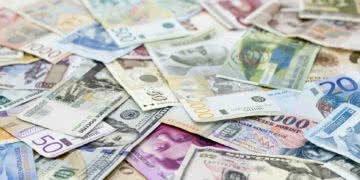The police raid on a junkyard on the outskirts of Bangkok had all the trappings of a drug bust. Swarming onto the open-air property in late May, officers from the Royal Thai Police found undocumented workers from Laos and Myanmar engaged in dangerous work that exposed them to blasts of toxic fumes and dust — a common hazard on the lowest rung of their illegal and booming international trade. The products these workers handled, however, were not heroin or methamphetamines but vast piles of discarded computers, electrical wires and circuit boards. And it’s very likely that much of this electronic waste came from one of the world’s biggest producers: the United States.
E-waste has become the world’s fastest-growing trash stream. For all of us who have discarded a phone or computer for a newer, sleeker model, the reasons are hardly a mystery. Still, the growth is staggering: The worldwide accumulation of e-waste has more than doubled in the last nine years. In 2016, according to the United Nations University, a global think tank that tracks the problem, the yearly accumulation reached 49.3 million tons — enough to fill more than a million 18-wheel trucks stretching from New York to Bangkok and back. By 2021, the annual total is predicted to surpass 57 million tons.
The explosion of e-waste highlights its dual (and dueling) identities as both environmental scourge and potential economic resource. Though often laced with lead, mercury or other toxic substances, laptops and phones also contain valuable elements like gold, silver and copper. Yet barely 20 percent of the world’s e-waste is collected and delivered to formal recyclers. The fate of the rest is largely unknown. Only 41 nations compile e-waste statistics, and their partial data can’t keep up with the expansion of electronic devices into so many consumer categories — toys and toilets, watches and refrigerators. In the United States, which generated an estimated 6.9 million tons of e-waste in 2016 (42 pounds per person), most e-waste probably goes straight into the trash. By one account, e-waste makes up just 2 percent of the total volume in American landfills — but more than two-thirds of heavy metals.
Despite being the world’s second-largest producer — China recently claimed the top spot — the United States is the only developed country that hasn’t ratified the Basel Convention on hazardous waste, a treaty that restricts the exports of e-waste and that has the support of 186 parties. Moreover, the United States has no national law for managing e-waste, leaving the issue to the states. (Fifteen states still have no e-waste legislation in effect.) The European Union, by contrast, has some of the toughest enforcement of e-waste laws in the world, banning exports to developing countries and compelling manufacturers to help fund recycling. Europe’s recycling rates for electronics — around 35 percent overall — are much higher than the American rate. “The U.S. has always been the elephant in room that nobody wants to talk about,” says Deepali Sinha Khetriwal, a Mumbai-based research associate at the United Nations University. “Until it decides to play a part, we can’t really solve the problem of e-waste shipments.”
A significant but ultimately unquantified portion of American e-waste is quietly exported, mostly to Asia. Until last year, China was handling an estimated 70 percent of the world’s processed e-waste. In January, Beijing imposed a sweeping ban on the import of e-waste as part of its “National Sword” campaign to slash the levels of what it calls “foreign garbage.” Though spurred by environmental concerns — rivers choked with toxic chemicals, local children with high levels of lead in their blood — Beijing’s move also seems emblematic of its increasing self-sufficiency and growing rejection of the West. The ban has caused upheaval in the global trade in e-waste, diverting huge amounts to smaller nations ill equipped to handle the overflow.
Even before the ban came into full effect, Chinese waste traders were setting up shop in Thailand. Days after the May raid outside Bangkok, the Thai police displayed seven containers at a local port, each packed with 24 tons of mostly broken electronics. So far, the Thai police have suspended the operations of five illegal e-waste processing facilities and found evidence of dozens of smaller high-polluting operations that risk contaminating the countryside. “Thailand is getting hit by a tidal wave of electronic waste,” says Jim Puckett, executive director of the Basel Action Network, a Seattle-based nonprofit that has used GPS devices to track illegal exports of e-waste to Asia. “The rest of Asia better get ready, because they are next.”
The gold in the world’s e-waste alone equals more than a tenth of the gold mined globally each year. And yet much of this treasure is simply reburied in landfills.
The bulk of used electronics shipped to the developing world are meant to give second and third lives to devices and help bridge the world’s digital divide. But the cloak of “reuse and repair” is often used to hide illegal exports of e-waste. This is ostensibly scrap, but the frenzy of hazardous e-waste activity in cities in Pakistan and Ghana, for example, testifies to the riches hidden in the piles of discarded electronics. According to researchers at U.N.U., the raw materials contained in e-waste were worth roughly $61 billion in 2016, more than the gross domestic product of even middle-income countries like Croatia or Costa Rica.
The precious metals in e-waste, found especially in circuit boards, are more concentrated than in the most productive mines. In 2016, the gold in the world’s e-waste equaled more than a tenth of the gold mined globally that year. And yet much of this treasure is simply reburied in landfills. Based on e-waste disposal rates, Americans alone throw out phones worth $60 million in gold and silver every year.
The idea of “mining” e-waste has tantalized the recycling and electronics industries for decades. Until recently, most methods to extract value have been costly, inefficient and hazardous. Backyard recyclers in places like India and Indonesia recover gold by bathing circuit boards in nitric and hydrochloric acid, thus poisoning waterways and communities. Others, like the migrant workers in Thailand, break down used electronics with cooking stoves and shredders and wear no protection against the emissions.
Over the last few years, however, innovators have devised safer techniques in the lab that would wrest value from e-waste. One isolates rare-earth elements with carbon nanotube technology; another recovers key minerals by bombarding them with underwater sound waves. Josh Lepawsky, a Canadian geographer and the author of “Reassembling Rubbish,” finds hope in a curious phenomenon: the growing re-export of e-waste from the developing world back to advanced countries that have greater recycling capacity. An “e-waste offset” by which countries importing high-quality used electronics send back an equal volume of e-waste “is very promising,” Lepawsky says.
As the extraction of metals becomes more efficient and eco-friendly, tech manufacturers may feel compelled to get raw materials from their own end-of-life products rather than from the earth. Apple, for instance, has pledged to make all of its future laptops and iPhones out of renewable resources or recycled materials. The idea goes beyond business to national security. “Governments are starting to take a more strategic view of e-waste, too,” Khetriwal says. “They ask, ‘How can we secure the raw materials we need for the future?’ ” Some of these metals and rare-earth elements are scarce, and some, like cobalt, are found mostly in conflict zones. By mining the ever-expanding mountains of e-waste, countries could steel themselves against the volatility in prices and supplies of the global market.
Some e-waste optimists envision a “circular economy” in which refurbished, reused and recycled raw materials help fuel a sustainable future. Japan was an early leader of this movement, pushing e-waste recycling with tough laws and, more recently, appealing gimmicks. At the 2020 Olympic Games in Tokyo, athletes will receive gold, silver and bronze medals forged from recycled e-waste — emblems of a world in which e-waste can take on the sheen of immortality.
The utopian vision of a circular economy is a long way off, though. E-waste recycling remains stubbornly low in most parts of the world. Even the extraction of precious metals has proved hard for companies to capitalize on. And the remaining mass of e-waste — mainly plastics laced with metals, chemicals and flame retardant — pose a more intractable problem. The recycling of these complex plastics would probably need to be subsidized or enforced through legislation — and few countries outside Europe or Japan have shown the commitment to make that happen.
To move toward a circular economy, manufacturers would also need to embrace a “green design” that minimizes the generation of e-waste in the first place. Companies like Apple and Dell, though, have not taken enough measures to make their products easier to use longer. “Planned obsolescence,” the intentional creation of products that rapidly become outdated so customers must replace them with ever-newer models, remains the modus operandi of the tech industry. Manufacturers argue that the approach stimulates not only profits but also the very innovation that drives the global economy. And it has produced a Pavlovian response in consumers, for whom the temptation to buy a slightly cooler phone every couple of years has hardened into a seeming necessity. Not long ago, one tech manufacturer introduced a cheaper, longer-lasting phone — the perfect antidote to planned obsolescence. It was not a hit — but it was a reminder that we all share some responsibility for the explosion of e-waste in scrap yards across the world.















